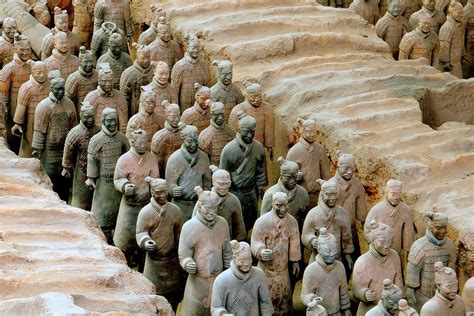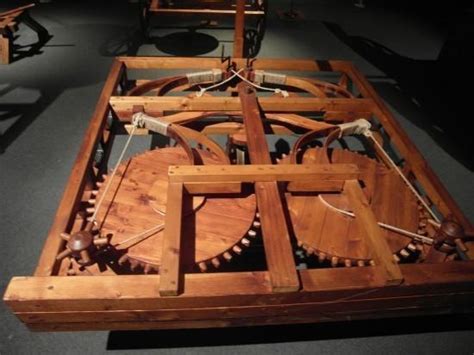china emperor tomb excavation It appears that the mission of this Terracotta Army was to guard the nearby mausoleum of Qin Shi Huang, the formidable first emperor of the Qin dynasty who ruled from . Mini Loader 0.85-1T; Skid Steer 1-2.5T; Skid Steer 2.5-3.8T; High Flow Skid Steer; Mini .
0 · the secret tomb of china
1 · qin shi huang tomb underground
2 · qin shi huang tomb traps
3 · qin shi huang tomb mercury
4 · inside qin shi huang tomb
5 · chinese emperor tomb opened
6 · chinese emperor buried with army
7 · china's terra cotta warriors
Gardens Levelled - Mini Digger Hire, Foundations, Landscaping. Edinburgh. .
the secret tomb of china
wacker skid steer specs
qin shi huang tomb underground
It appears that the mission of this Terracotta Army was to guard the nearby mausoleum of Qin Shi Huang, the formidable first emperor of the Qin dynasty who ruled from . Learn about the first emperor of China, his opulent tomb complex and the army of clay soldiers that guard it. Find out why the central tomb remains unexcavated and what . Learn the reasons why the underground palace of the First Qin Emperor remains unexcavated, such as limited technology, deep depth, long time, and environmental risk. Find .
Qin tomb is the burial place of the first Qin emperor, who unified China and built the Great Wall. It contains a vast underground palace, a terra-cotta army, and other treasures, but the tomb itself remains unexcavated. Archaeologists have unearthed a 16-tonne coffin and a lavish funerary collection at the Terracotta Warrior complex of China’s first emperor. The tomb is likely the burial of Prince . Learn about the history and mystery of the mausoleum of China's first emperor, Qin Shi Huang, and his terracotta army. Explore the exhibition of archaeological discoveries, the underground palace, and the satellite tombs.

Learn about the discovery and excavation of the terracotta army of the first emperor of China, Qin Shi Huang, at his burial complex in Xian. Find out how the figures were made, . Learn about the legacy of Qin Shi Huang Di, the First Emperor of China, and his massive tomb complex with thousands of lifelike clay soldiers. Explore the clues and .
volvo ecu control modul volvo skid steer mc85
The mausoleum of Qin Shi Huang, the first emperor of the Qin dynasty, is a large tomb complex with a pyramid-shaped mound and a necropolis of terracotta soldiers. It is a UNESCO World Heritage Site and a cultural symbol of ancient China. It appears that the mission of this Terracotta Army was to guard the nearby mausoleum of Qin Shi Huang, the formidable first emperor of the Qin dynasty who ruled from 221 to 210 BCE.Learn about the discovery and excavation of the massive tomb complex of Qin Shi Huangdi, who declared himself the first emperor of China in 221 B.C.E. See the terracotta warriors, the tumulus, and the underground chambers that reveal his vision of an eternal empire. Learn about the first emperor of China, his opulent tomb complex and the army of clay soldiers that guard it. Find out why the central tomb remains unexcavated and what mysteries it may reveal.

Learn the reasons why the underground palace of the First Qin Emperor remains unexcavated, such as limited technology, deep depth, long time, and environmental risk. Find out what is buried inside the mausoleum and how to visit the terracotta warriors pits. Qin tomb is the burial place of the first Qin emperor, who unified China and built the Great Wall. It contains a vast underground palace, a terra-cotta army, and other treasures, but the tomb itself remains unexcavated. Archaeologists have unearthed a 16-tonne coffin and a lavish funerary collection at the Terracotta Warrior complex of China’s first emperor. The tomb is likely the burial of Prince Gao, one of 50 children of Qin Shi Huang, who unified China in 221 BC.
Learn about the history and mystery of the mausoleum of China's first emperor, Qin Shi Huang, and his terracotta army. Explore the exhibition of archaeological discoveries, the underground palace, and the satellite tombs.
Learn about the discovery and excavation of the terracotta army of the first emperor of China, Qin Shi Huang, at his burial complex in Xian. Find out how the figures were made, what they.
Learn about the legacy of Qin Shi Huang Di, the First Emperor of China, and his massive tomb complex with thousands of lifelike clay soldiers. Explore the clues and controversies revealed by.
The mausoleum of Qin Shi Huang, the first emperor of the Qin dynasty, is a large tomb complex with a pyramid-shaped mound and a necropolis of terracotta soldiers. It is a UNESCO World Heritage Site and a cultural symbol of ancient China.
It appears that the mission of this Terracotta Army was to guard the nearby mausoleum of Qin Shi Huang, the formidable first emperor of the Qin dynasty who ruled from 221 to 210 BCE.Learn about the discovery and excavation of the massive tomb complex of Qin Shi Huangdi, who declared himself the first emperor of China in 221 B.C.E. See the terracotta warriors, the tumulus, and the underground chambers that reveal his vision of an eternal empire. Learn about the first emperor of China, his opulent tomb complex and the army of clay soldiers that guard it. Find out why the central tomb remains unexcavated and what mysteries it may reveal. Learn the reasons why the underground palace of the First Qin Emperor remains unexcavated, such as limited technology, deep depth, long time, and environmental risk. Find out what is buried inside the mausoleum and how to visit the terracotta warriors pits.
Qin tomb is the burial place of the first Qin emperor, who unified China and built the Great Wall. It contains a vast underground palace, a terra-cotta army, and other treasures, but the tomb itself remains unexcavated.
Archaeologists have unearthed a 16-tonne coffin and a lavish funerary collection at the Terracotta Warrior complex of China’s first emperor. The tomb is likely the burial of Prince Gao, one of 50 children of Qin Shi Huang, who unified China in 221 BC. Learn about the history and mystery of the mausoleum of China's first emperor, Qin Shi Huang, and his terracotta army. Explore the exhibition of archaeological discoveries, the underground palace, and the satellite tombs. Learn about the discovery and excavation of the terracotta army of the first emperor of China, Qin Shi Huang, at his burial complex in Xian. Find out how the figures were made, what they.

Learn how to measure and improve excavator productivity per hour in m3, a reflection of the machine's efficiency and performance. Find out the average productivity rates for different excavator models and types, and the factors that influence them.
china emperor tomb excavation|chinese emperor tomb opened